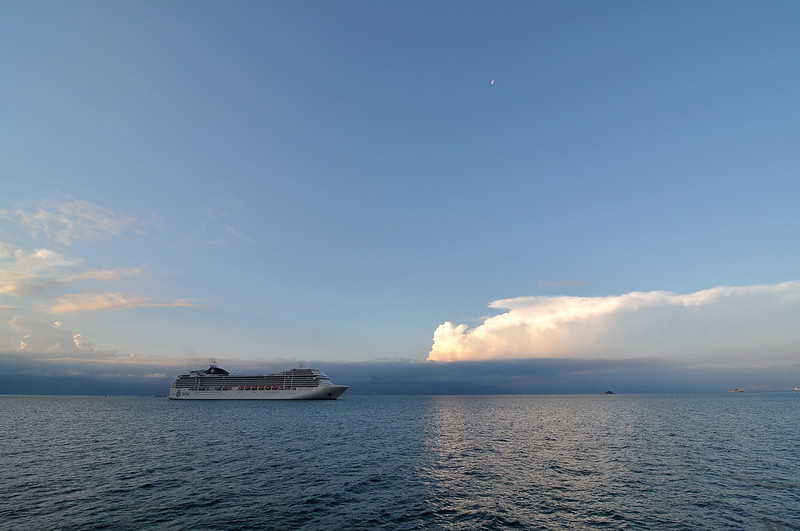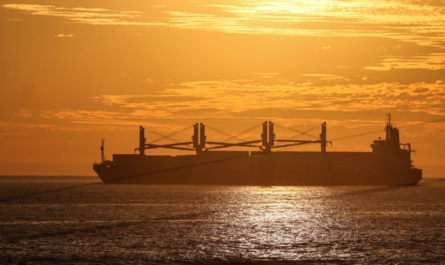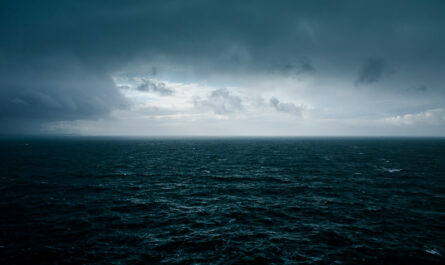The Atlantic Ocean has long been a playground and a proving ground for sailors, adventurers, and explorers. With its variety of landscapes, unpredictable weather patterns, and diverse ecosystems, the Atlantic offers an unmatched sailing experience that ranges from the tropical Caribbean seas to the open and challenging transatlantic routes. For centuries, this ocean has beckoned voyagers, from early explorers charting new worlds to modern-day sailors seeking adventure and freedom on the open water. Whether you’re drawn to the turquoise waters of the Caribbean or the exhilarating challenge of a transatlantic crossing, sailing the Atlantic offers an experience like no other.
This article dives into the allure of Atlantic sailing, highlighting both the popular Caribbean destinations and the excitement of crossing the vast ocean. We’ll explore key routes, weather considerations, the best times to sail, and essential tips for a successful voyage.
Setting Sail in the Caribbean: Tropical Adventures Await
For many sailors, the Caribbean is an ideal starting point for exploring the Atlantic. Its warm climate, steady trade winds, and abundance of islands create the perfect conditions for both novice and experienced sailors. Known for its crystalline waters, vibrant marine life, and welcoming coastal communities, the Caribbean offers a relaxed, yet thrilling, sailing experience with plenty of destinations to explore.
Popular Caribbean Sailing Destinations
- The British Virgin Islands (BVI): Often referred to as the “sailing capital of the Caribbean,” the BVI offers ideal sailing conditions with short distances between islands, calm waters, and consistent trade winds. Highlights include the Baths on Virgin Gorda, the pristine beaches of Anegada, and the lively island of Jost Van Dyke, famous for its beach bars.
- St. Lucia and the Grenadines: Known for its dramatic landscapes, St. Lucia is a must-visit destination, with its twin Pitons rising majestically over the sea. From St. Lucia, many sailors explore the Grenadines, a chain of small islands featuring secluded anchorages, coral reefs, and the beautiful Tobago Cays Marine Park.
- The Bahamas: With over 700 islands, the Bahamas offer endless exploration opportunities. From the bustling capital of Nassau to the tranquil Exumas with their swimming pigs and vibrant blue holes, the Bahamas offer unique experiences for sailors. The shallow waters and cays make it perfect for beachcombing, snorkeling, and relaxing in secluded bays.
- Cuba: Known for its rich culture and history, Cuba offers a different Caribbean experience. The island’s coastlines feature unspoiled beaches, lush mangroves, and vibrant coral reefs. Sailing around Cuba offers the chance to explore colonial towns like Havana and Santiago de Cuba, each with its unique blend of architecture, music, and history.
- Puerto Rico and the Spanish Virgin Islands: Less crowded than other Caribbean destinations, Puerto Rico offers beautiful coastal towns, rainforests, and historic forts. Just east of Puerto Rico, the Spanish Virgin Islands, including Culebra and Vieques, offer secluded anchorages, pristine beaches, and a relaxed atmosphere, making them a perfect destination for a more off-the-beaten-path adventure.
Best Time to Sail in the Caribbean
The best time to sail in the Caribbean is during the winter months, from November to April, when the trade winds are steady, temperatures are warm, and rainfall is minimal. This period also marks the Caribbean’s high season for tourism, which means lively island festivities, but it also brings higher prices and busier anchorages.
The hurricane season runs from June to November, with the peak occurring between August and October. While some sailors still venture out during these months, careful planning, reliable weather forecasting, and knowledge of sheltered anchorages are essential for safe sailing.
Transatlantic Crossings: The Ultimate Sailing Adventure
For those seeking a greater challenge, a transatlantic crossing offers the ultimate adventure in ocean sailing. Spanning approximately 3,000 nautical miles from Europe to the Americas, or vice versa, a transatlantic journey is both a mental and physical test that requires careful preparation and determination. Historically, the Atlantic crossing was a voyage of exploration and trade, but today it represents an exhilarating rite of passage for sailors worldwide.
Key Transatlantic Routes
- The Tradewind Route (Canary Islands to the Caribbean): This route is one of the most popular transatlantic crossings, following the path of the trade winds from the Canary Islands to the Caribbean. Many sailors embark from Las Palmas in Gran Canaria, taking advantage of the steady east-to-west trade winds and generally favorable weather conditions.
- The Northern Route (Europe to North America): This route is often chosen by sailors departing from Northern Europe, including the United Kingdom, France, and Ireland, with destinations on the east coast of the United States or Canada. The Northern Route is more challenging due to unpredictable weather systems and the risk of encountering strong westerly winds and low-pressure systems.
- The Westerlies Route (Caribbean to Europe): For those making the return journey from the Caribbean back to Europe, the Westerlies Route takes advantage of prevailing westerly winds. Sailors typically set off from islands like Bermuda or the Azores, although this route involves more challenging weather patterns and requires careful timing to avoid winter storms.
- The Azores High Route: This route involves a stopover in the Azores, a group of islands in the North Atlantic, and is often chosen by sailors crossing from the Caribbean or North America to Europe. The Azores provide a welcome break for rest and resupply and are a scenic and culturally rich destination.
Preparation for a Transatlantic Voyage
A successful transatlantic crossing requires meticulous planning, reliable equipment, and a strong understanding of weather patterns and ocean currents. Here are some key considerations for preparing for the journey:
- Choosing the Right Vessel: The ideal boat for an Atlantic crossing is typically a sturdy, seaworthy monohull or catamaran designed for bluewater cruising. The vessel should be equipped with robust safety features, including reinforced rigging, life rafts, and emergency beacons.
- Navigation and Communication Equipment: Long-distance ocean sailing demands advanced navigation and communication tools. GPS, radar, AIS (Automatic Identification System), and satellite communication devices are essential for maintaining a clear route, avoiding potential obstacles, and staying connected in emergencies.
- Provisioning and Supplies: Provisioning for a transatlantic journey requires careful planning. Sailors must account for food, fresh water, and fuel supplies to last several weeks. In addition, spare parts, medical supplies, and emergency rations should be part of every vessel’s inventory.
- Weather Forecasting: The weather on a transatlantic crossing can be unpredictable, especially on northern routes. Sailors rely on regular weather updates, satellite data, and services such as the Atlantic Oceanographic and Meteorological Laboratory (AOML) for accurate forecasting. Understanding ocean currents, particularly the North Atlantic Drift, is also essential for efficient and safe passage.
The Thrills and Challenges of Atlantic Sailing
Whether cruising in the Caribbean or undertaking a transatlantic crossing, sailing the Atlantic Ocean brings a unique set of thrills and challenges. Here’s what sailors can expect to experience on these waters:
1. Changing Weather Patterns
The Atlantic is known for its variable weather, especially in the open ocean. From tropical storms near the Caribbean to the powerful westerlies and shifting high-pressure systems in the North Atlantic, sailors must be prepared for sudden changes in wind and sea conditions. While the trade winds offer a generally consistent breeze in the tropics, further north, the Atlantic’s weather can be unpredictable and demands constant vigilance.
2. The Rewarding Sight of Marine Wildlife
The Atlantic Ocean is home to diverse marine life, offering sailors the chance to spot dolphins, whales, sea turtles, and a variety of seabirds. Sighting pods of dolphins or a majestic humpback whale breaching the surface is an unforgettable experience that adds to the magic of an Atlantic sailing adventure. In the Caribbean, coral reefs teem with vibrant fish, making snorkeling stops a must for anyone interested in exploring the ocean’s underwater world.
3. The Solitude of Open Ocean Sailing
For those embarking on a transatlantic journey, the vastness of the open ocean provides a rare sense of solitude and freedom. With nothing but the horizon in sight for days on end, sailors experience a profound connection to the natural world. This isolation, however, requires mental resilience, as the long days at sea can be both physically and psychologically demanding.
4. Navigating by the Stars
One of the timeless pleasures of ocean sailing is navigating by the stars. In the open Atlantic, away from city lights, the night sky becomes a spectacular display of stars, guiding sailors just as they did for ancient mariners. The North Star and other constellations become vital markers for sailors, adding a sense of history and wonder to the voyage.
Sustainable Sailing: Protecting the Atlantic for Future Generations
As the popularity of sailing grows, so does the responsibility to protect the Atlantic Ocean’s delicate ecosystems. Many sailors are committed to practicing sustainable sailing by minimizing waste, reducing fuel consumption, and respecting marine wildlife.
1. Eco-Friendly Boat Maintenance
Environmentally conscious sailors use eco-friendly cleaning products, biodegradable soaps, and non-toxic antifouling paints to reduce the impact of their vessels on the ocean. By maintaining boats in an environmentally responsible way, sailors help to preserve the health of the marine ecosystem.
2. Reducing Plastic Waste
Plastic pollution is a significant issue in the Atlantic, particularly in high-traffic sailing areas. Sailors can contribute by minimizing single-use plastics on board, properly storing and disposing of waste, and participating in ocean cleanup initiatives. Many cruising communities organize beach cleanups in popular anchorages, helping to keep these areas pristine.
3. Supporting Marine Conservation Efforts
Organizations such as the Ocean Conservancy and the Atlantic Whale and Dolphin Foundation promote marine conservation and protection efforts across the Atlantic. Sailors can support these initiatives by participating in citizen science projects, such as reporting sightings of marine species, which contributes valuable data for conservation research.
Conclusion: The Atlantic as a Timeless Pathway for Adventure
Sailing the Atlantic Ocean is a journey steeped in history, natural beauty, and human endurance. From the sun-drenched islands of the Caribbean to the vast, open waters of a transatlantic crossing, the Atlantic offers unparalleled opportunities for adventure, exploration, and connection with nature. Each trip across this ocean is a unique experience, shaped by changing weather, encounters with wildlife, and the ever-present rhythm of the sea.
As sailors chart their courses across the Atlantic, they become part of a tradition that spans centuries, carrying forward the legacy of exploration and respect for the power and beauty of the ocean. Whether cruising the Caribbean’s islands or challenging the Atlantic’s open waters, the spirit of adventure remains, reminding us of the timeless allure of the ocean. The Atlantic’s vast expanse holds countless stories, waiting to be discovered by those bold enough to set sail.


